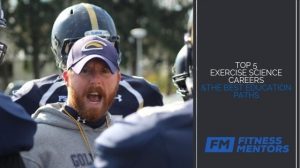The NASM CPT exam is notorious for being one of the most difficult fitness certification exams out there. They purposely try to make it difficult in many ways, like reaching into the depths of the text book to locate the one sentence where that test question can be found [take our free NASM CPT Exam Study Course and we’ll show you each sentence]. They also have many questions that you must truly understand the concept to get right. Regardless of the reason for these questions being hard, let us help you by explaining the top 5 hardest questions from the NASM CPT Exam. (This has been updated to reflect the newest version of the exam: Version 6)
- If you haven’t yet purchased a NASM Study Package click here to receive 30% off.
- If you want an in depth review of the NASM CPT Exam click here.
BONUS!
Try our free NASM Practice Test below to see how you’d fair on the real exam:

1
Which of the following is released into the synaptic terminal to stimulate muscular contraction?
- Calcium
- Troponin
- Acetylcholine
- Actin
To immediately analyze this question, it is a science-based and from chapter two, which they do point out in their study guide. Specifically, they tell you to memorized Figure 2.38. When memorizing this chart, the answer is only 1 of the 10 steps in initiating a muscular contraction. All of the above answers are also located in this chart, making it that much more difficult. Thirdly, the actual answer is abbreviated in the text, making you second guess yourself. All of these answers participate in muscular contraction, but the key words you must look at in the question is the ‘synaptic terminal’, as this will tell you which part of the muscular contraction they are focusing on.
Answer: C : Acetylcholine
2
Anything asking you about Altered Length Tension Relationships or Altered Force Couple Relationships.
To vent a smidge, they don’t tell you what these topics are when you are reading in the book. They discuss the Length Tension Relationship and Force Couple, but never define what an altered version of either actually is. Yes, you could say its common sense, but the way they ask the questions leaves a little room for argument as to what the correct answer is. For example, “When the feet turn out due to tightness in the calves, which of the following has occurred? A. Altered Reciprocal Inhibition B. Altered Length Tension Relationship C. Altered Force Couple Relationship D. Muscle Imbalance”. Well we definitely know that this is an example of a muscle imbalance. But by definition, which they do not have in the book, misaligned joints or poor posture is an Altered Length Tension Relationship. This is your correct answer. My guess is they are trying to get you to use the principles they discuss as opposed to just saying it is a muscle imbalance. Tough stuff, but you just got it right for reading this.
3
Which muscle can internally rotate the hip when the foot is in the planted position touching the floor?
- Gluteus Maximus
- Adductor Longus
- TFL
- Vastus Medialis
Overall just a tough question as this would require you to memorize all the concentric actions of most the muscles in Appendix D. Luckily they don’t ask many muscle action questions, so don’t waste too much time, but knowing the basics to the larger muscles can help. In the back of the book the TFL does perform internal rotation, but adding, “when the foot is in the planted position touching the floor” throws most people off. The others are going to be external rotators of the hip or perform no rotation of the hip at all. The TFL is also associated with many muscle imbalances, so be aware this is not the only place that the TFL makes an appearance on the NASM CPT Test.
4
Which exercise follows the Half Foam Roll in the lower extremity proprioceptive progression continuum?
- Bosu Ball
- Balance Beam
- Foam Pad
- Balance Disc
This question is one of the questions that point to a very specific section of the book that you would not think to memorize. Most of us have some basic training sense that would give us a good guess, but the answer can be found in table 10.1 in Balance Training Program Design section. The correct answer is the Foam Pad, but noting the asterisk at the bottom, “theses modalities come in many shapes and sizes that will dictate proper progression”. This tricks many test takers as the balance disk and foam pad are tough to choose from when thinking of the next progression logically. Studying the right material is sometimes better than relying on logic, (insert shameless plug here) and that’s why we highly encourage checking out Free Fitness Mentors Study Guide for the NASM CPT Exam.
5
Which of the following supplements have the greatest potential for excess dosage in adults?
- Selenium, Magnesium, Vitamin D and Thiamin
- Vitamin A, Vitamin D, Iron and Zinc
- Vitamin A, Iodine, Potassium, Vitamin K
- Vitamin E, Vitamin B12, Biotin and Manganese
Uggghhhh. Pure agony. Of course you studied this, right? Well you know a few that might be considered toxic in excess amounts, but you can’t recall all of them can you? I know the feeling and this one gets most all test takers. Looking to Chapter 18 – Nutrition and Supplementation. You’re going to find this in the first two paragraphs after Table 18.3 – Comparison of Dietary Reference Intake Values (for adult men and women) and Daily Values for Micronutrients with the Tolerable Upper Intake Levels, Safe Upper Levels, and Guidance Levels; they couldn’t have named that chart any better. Every supplement has the potential for excess dosage when taken in extreme amounts, but NASM is looking to make sure you know the ones that are most common for our society, eating the American diet. Looking at the paragraph below Table 18.3, they list 3 vitamins and 2 minerals that specifically that can cause serious adverse effects, which are Vitamins A, D, B6, Iron and Zinc.
These questions will now be a ton easier once they show up on the test. 5 questions down, 115 to go. NASM can pull questions from any sentence in the book which makes the 600+ pages daunting for the unmotivated reader (Our Free Audio Lectures take you page by page through the text and explain everything to make this process easier). Check out more of our tips and tricks to passing the exam by signing up to receive the “5 Secrets to Passing Your NASM CPT Exam”. Also if you need more help we have some great premium materials, like our Practice Tests for the NASM CPT Exam that make this test a breeze. Check them out here. (If you can score above a 108 out of 120 on all three of our practice final exams you are ready to test.)

Five Secrets to Passing your NASM-CPT Exam
Featured Posts
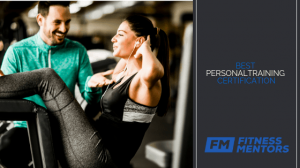
How to Become a Personal Trainer in 5 Simple Steps
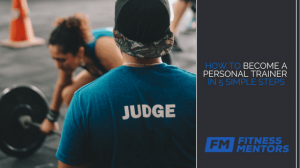
Personal Trainer in 2020
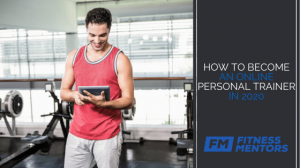
Personal Trainer Salary
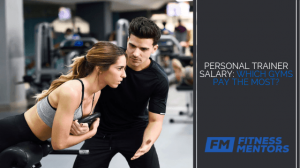
Top 5 Exercise Science Careers
